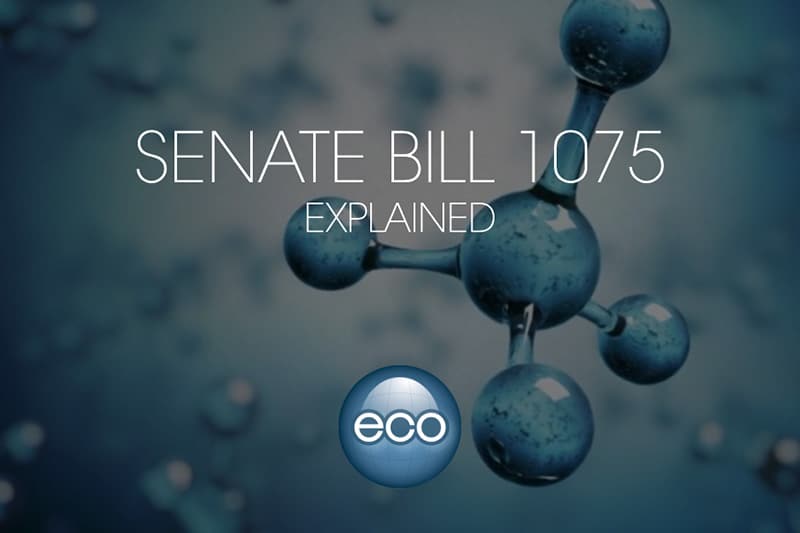
Senate Bill 1075 Explained
Senate Bill 1075 (SB 1075) represents a significant legislative effort by California to advance the development and integration of clean hydrogen as a pivotal component in achieving the state’s climate, air quality, and energy objectives. This bill underscores the state’s commitment to fostering a well rounded and full green hydrogen industry, aiming to decarbonize challenging sectors, enhance energy resilience, and stimulate economic growth.
Key Provisions of SB 1075
- Establishment of the California Clean Hydrogen Hub Fund: SB 1075 creates the California Clean Hydrogen Hub Fund within the State Treasury, administered by the California Infrastructure and Economic Development Bank (I-Bank). The fund is designed to provide grants for clean hydrogen projects across the state, with a particular focus on:
- Demonstrating and scaling the production, processing, delivery, storage, and end-use of clean hydrogen.
- Advancing toward the goal of producing or utilizing 15,000 tons of clean hydrogen daily in California by 2030.
- Matching federal funds allocated for regional clean hydrogen hubs as outlined in the federal Infrastructure Investment and Jobs Act (IIJA).
- Definition and Standards for Clean Hydrogen: The bill defines “clean hydrogen” as hydrogen produced from eligible renewable energy resources, aligning with federal standards that stipulate a carbon intensity equal to or less than 2 kilograms of CO₂-equivalent per kilogram of hydrogen produced at the production site. This definition ensures consistency with national guidelines and positions California to effectively compete for federal funding opportunities.
- Interagency Collaboration and Reporting: SB 1075 mandates a collaborative approach among key state agencies:
- California Air Resources Board (CARB): Tasked with identifying the role of hydrogen, especially green hydrogen, in meeting the state’s climate and air quality goals. CARB is required to produce a comprehensive report covering hydrogen development, deployment, and utilization across all sectors.
California Air Resources Board - California Energy Commission (CEC) and California Public Utilities Commission (CPUC): These agencies, in conjunction with CARB, are responsible for evaluating the necessary steps for the efficient deployment and use of hydrogen as an alternative fuel. This includes developing recommendations for legislative definitions of various categories of hydrogen and their potential end uses.
- California Air Resources Board (CARB): Tasked with identifying the role of hydrogen, especially green hydrogen, in meeting the state’s climate and air quality goals. CARB is required to produce a comprehensive report covering hydrogen development, deployment, and utilization across all sectors.
- Appointment of a Clean Hydrogen Hub Director: To coordinate statewide efforts related to clean hydrogen, the bill requires the Governor to appoint a Clean Hydrogen Hub Director. This role involves liaising with federal entities, state agencies, and local jurisdictions to streamline hydrogen-related initiatives and ensure cohesive progress toward the state’s hydrogen goals.
Implications for the California Air Resources Board (CARB)
As the state’s leading agency on air quality and climate policies, CARB plays a central role in the implementation of SB 1075. The board’s responsibilities under this legislation include:
- Comprehensive Hydrogen Assessment: CARB is tasked with conducting an in-depth analysis of how hydrogen, particularly green hydrogen, can contribute to California’s environmental objectives. This involves evaluating hydrogen’s potential to reduce greenhouse gas emissions, improve air quality, and integrate with existing and future energy systems.
California Air Resources Board - Lifecycle Emissions Analysis: The board must develop methodologies to calculate the lifecycle carbon intensity of various hydrogen production pathways. This ensures that hydrogen production aligns with the state’s stringent environmental standards and facilitates the accurate assessment of hydrogen’s environmental benefits.
- Policy Development and Recommendations: In collaboration with the CEC and CPUC, CARB is responsible for formulating policy recommendations to the Legislature. These recommendations will define different categories of hydrogen (such as green, renewable, and low-carbon hydrogen), establish appropriate end uses for each category, and propose measures to prevent double-counting of environmental attributes associated with hydrogen production and use.
Advancing Clean Hydrogen in California
SB 1075 positions California as a leader in the burgeoning clean hydrogen economy. By establishing a dedicated fund, setting clear definitions and standards, and fostering interagency collaboration, the bill lays a robust foundation for the integration of clean hydrogen into the state’s energy portfolio. This strategic approach not only aims to decarbonize hard-to-abate sectors but also seeks to attract federal investment, stimulate job creation, and promote environmental justice by improving air quality in disadvantaged communities disproportionately affected by pollution.
To summarize: Senate Bill 1075 is a comprehensive legislative measure that leverages clean hydrogen as a versatile tool to meet California’s ambitious climate and energy goals. Through the concerted efforts of CARB, CEC, CPUC, and other stakeholders, the state is poised to harness the potential of clean hydrogen, driving innovation and sustainability for years to come.